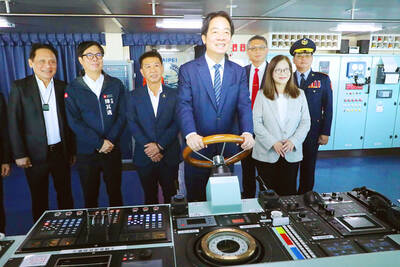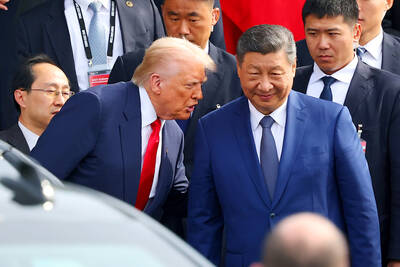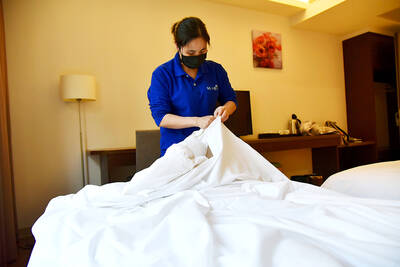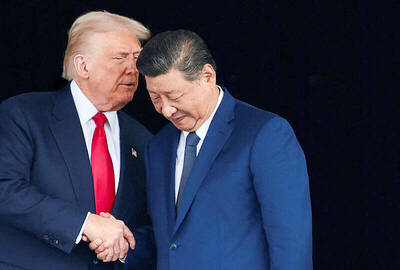Nintendo has always been driven by a strong gaming franchise, stoically asserting that great games sell hardware, not the other way round. With long-running titles such as Mario, Zelda and Metroid under its belt, and 2 billion units sold in 20 years, the company has certainly put its money where its mouth is.
"We remain all about the game; actions speak louder than words," said Nintendo's president, Saturo Iwata, at this year's E3, where Nintendo unveiled the first details of its next generation console, the Revolution.
While Microsoft and Sony have been all teraflops and anti-aliasing in the promotion of the Xbox 360 and the PlayStation3, Nintendo has taken a more laid-back approach. Even weeks after E3, little has been revealed about the Revolution's capabilities. All the world knows is that it will have 512MB of internal Flash memory, two USB ports, built-in Wi-Fi access and will also allow users to download the company's back-catalogue of N64, SNES and NES games.
However, much of the speculation surrounding the system has been about what form the controller will take. Although Iwata has been careful not to reveal too much about the Revolution -- Nintendo is planning to release more details at the end of the year -- he has expressed reservations about the controllers gamers currently use.
"There are too many buttons and sticks on controllers for novice players, which is likely to discourage them from ever playing games at all," he says. "We want the Revolution's controller to be relevant to everybody and we really want people to feel like they want to touch and play with it."
Capturing the casual gaming market -- something Microsoft also wants to achieve -- should be an easy ride for Nintendo, which remains family-friendly in terms of content. Nowhere is this more evident than in Japan, where gaming is intrinsically rooted in the entertainment culture.
"Nintendo is very good at creating games that can appeal to the whole family," says Iwata. "There have been a lot of games created around excessive violence in the past few years and it seems to be escalating. From the business point of view, it doesn't make sense for us to follow suit.
"We cherish our hardcore gamers, but we always try to attract as many people as possible and expand the existing gaming population."
Nintendo recently unveiled its free-to-use worldwide DS Wi-Fi gaming service. The company has been sceptical about the potential of online console gaming, and Iwata still does not feel that Xbox Live is indicative of success because the number of Xbox owners playing on Xbox Live is still low.
As far as Nintendo is concerned, the future of multiplayer gaming is in Wi-Fi, not the Internet.
"If Nintendo sells 5 million DSs with Wi-Fi capabilities, then we want 5 million people to play with Wi-Fi," he said.
Nintendo is very proud of its portable wing and, as Reggie Fils-Aime, chief marketing officer of Nintendo, says: "For 16 years, Nintendo has owned the portable game space. We created it, and we're not moving out."
This has lead to speculation that the Revolution is designed to be portable, as its size and storage cradle suggest.
Nintendo's secrecy has also sparked theories that the controller is somehow contained within the Revolution -- that the machine itself is the controller.
Whatever transpires, Nintendo could use its heritage and innovation to provide gamers with an interesting alternative when the next-generation war finally arrives.

CALL FOR SUPPORT: President William Lai called on lawmakers across party lines to ensure the livelihood of Taiwanese and that national security is protected President William Lai (賴清德) yesterday called for bipartisan support for Taiwan’s investment in self-defense capabilities at the christening and launch of two coast guard vessels at CSBC Corp, Taiwan’s (台灣國際造船) shipyard in Kaohsiung. The Taipei (台北) is the fourth and final ship of the Chiayi-class offshore patrol vessels, and the Siraya (西拉雅) is the Coast Guard Administration’s (CGA) first-ever ocean patrol vessel, the government said. The Taipei is the fourth and final ship of the Chiayi-class offshore patrol vessels with a displacement of about 4,000 tonnes, Lai said. This ship class was ordered as a result of former president Tsai Ing-wen’s (蔡英文) 2018

UKRAINE, NVIDIA: The US leader said the subject of Russia’s war had come up ‘very strongly,’ while Jenson Huang was hoping that the conversation was good Chinese President Xi Jinping (習近平) and US President Donald Trump had differing takes following their meeting in Busan, South Korea, yesterday. Xi said that the two sides should complete follow-up work as soon as possible to deliver tangible results that would provide “peace of mind” to China, the US and the rest of the world, while Trump hailed the “great success” of the talks. The two discussed trade, including a deal to reduce tariffs slapped on China for its role in the fentanyl trade, as well as cooperation in ending the war in Ukraine, among other issues, but they did not mention

HOTEL HIRING: An official said that hoteliers could begin hiring migrant workers next year, but must adhere to a rule requiring a NT$2,000 salary hike for Taiwanese The government is to allow the hospitality industry to recruit mid-level migrant workers for housekeeping and three other lines of work after the Executive Yuan yesterday approved a proposal by the Ministry of Labor. A shortage of workers at hotels and accommodation facilities was discussed at a meeting of the legislature’s Transportation Committee. A 2023 survey conducted by the Tourism Administration found that Taiwan’s lodging industry was short of about 6,600 housekeeping and cleaning workers, the agency said in a report to the committee. The shortage of workers in the industry is being studied, the report said. Hotel and Lodging Division Deputy Director Cheng

‘SECRETS’: While saying China would not attack during his presidency, Donald Trump declined to say how Washington would respond if Beijing were to take military action US President Donald Trump said that China would not take military action against Taiwan while he is president, as the Chinese leaders “know the consequences.” Trump made the statement during an interview on CBS’ 60 Minutes program that aired on Sunday, a few days after his meeting with Chinese President Xi Jinping (習近平) in South Korea. “He [Xi] has openly said, and his people have openly said at meetings, ‘we would never do anything while President Trump is president,’ because they know the consequences,” Trump said in the interview. However, he repeatedly declined to say exactly how Washington would respond in